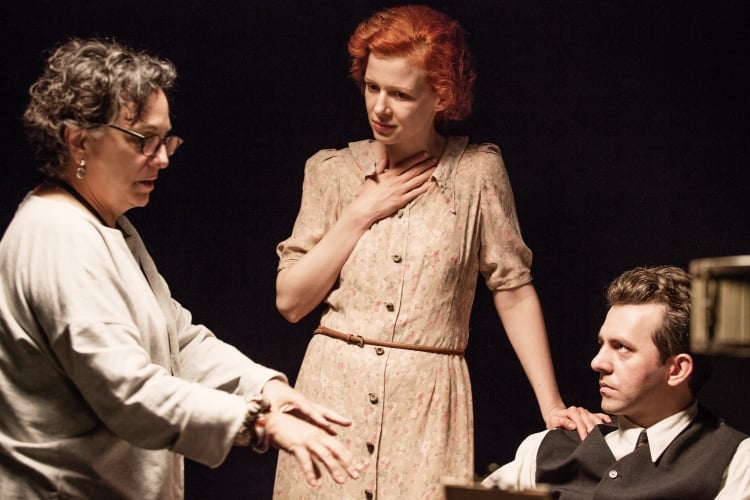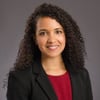 In a recent interview, I had the opportunity to speak with filmmaker Roberta Grossman—director of the acclaimed documentary film Who Will Write Our History? The film tells the remarkable true story of the Oyneg Shabes, a clandestine archival organization that formed in the Warsaw Ghetto to narrate the unfolding events from a Jewish perspective, as well as capture the richness of Jewish cultural life and agency that persisted in the face of the Nazi German occupation. The resulting archive includes a rich array of essays, diaries, drawings, posters, paintings, poetry, and underground newspapers. Here Grossman discusses the film’s development and reception, the power of eyewitness testimony, and the implications of the Oyneg Shabes Archive for how we teach and understand history.
In a recent interview, I had the opportunity to speak with filmmaker Roberta Grossman—director of the acclaimed documentary film Who Will Write Our History? The film tells the remarkable true story of the Oyneg Shabes, a clandestine archival organization that formed in the Warsaw Ghetto to narrate the unfolding events from a Jewish perspective, as well as capture the richness of Jewish cultural life and agency that persisted in the face of the Nazi German occupation. The resulting archive includes a rich array of essays, diaries, drawings, posters, paintings, poetry, and underground newspapers. Here Grossman discusses the film’s development and reception, the power of eyewitness testimony, and the implications of the Oyneg Shabes Archive for how we teach and understand history.
KS: Can you talk about what initially inspired you to make your film and how it is connected to Samuel Kassow’s book by the same name?
RG: I was actually working on another topic in the interwar Polish Jewish world and I read a review of Sam's book. And I got it and started reading it and thought, "Oh my God. I can't believe I don't know this story." Because it seemed to me to be the most important story, unknown or untold story of the Holocaust. To me, it seemed like the Dead Sea Scrolls coming out of the rubble of the Ghetto. So I reached out to Sam and started working on the film with him. And it took about seven years to make the film.
KS: Can you talk about the central role of historian Emanuel Ringelblum and his vision for producing a history narrated by Jewish people?
RG: What's that old saying? That if the lion could tell the story, it would be a very different story than that told by the hunter who killed the lion. Most of the material that we have, the visual material that we have from the Holocaust, was taken by the Nazi propaganda units. And they were taking this footage and photographs to show how wretched and disgusting the Jews were and, therefore, that they, the Nazis, were doing a good thing for humanity by eliminating the Jews. It's a very big difference if you have those who loathe the Jews enough to massacre them tell the story, or whether you have the Jewish people themselves tell the story. So it was very important to collect first-person documents in order to tell the story from the Jewish point of view after the war.
KS: It is striking to see so many artistic works contained in the archive from drawings and paintings to poetry and underground newspapers. Why is it so crucial for people to see these cultural artifacts?
RG: I think that one of the most remarkable things about the Warsaw Ghetto is that it was a living, breathing community for a long time. Because of the efforts of the Jewish community itself, especially the smuggling that went on, 80 percent of the Jews in the Warsaw Ghetto were still alive at the time of the Great Deportation. [Note: The Ghetto was sealed November 15, 1940 and the Great Deportation did not occur until July 22, 1942.] So they had managed to find a way to survive in those horrific circumstances. But not only to keep the body alive, but to keep the soul alive, too. The Oyneg Shabes were always trying to figure out how do you stay human and what does it mean to stay human in these horrible circumstances? And for them, being human meant literature and music and poetry and caring for others. Culture was a central element of what it meant to be and stay human. So I think that's a really important point to be made and an ongoing lesson for us today.
KS: What, for you, was the most powerful object or group of objects contained in the archive?
RG: I think, for me, perhaps the most powerful part of the archive is Abraham Lewin's diary because he is constantly talking about his feelings and how everything that's going on is impacting him emotionally. And even the fact that he continues to write the day that his wife is deported and how he feels ashamed that he didn't go after her. I mean, this is a deeply powerful, in-the-moment testimony in which he allowed himself to be honest about his feelings. His bewilderment at what is happening to him, to his family, his culture, the people he loved… That, to me, is perhaps the most powerful writing in the archive…The Jewish Historical Institute in Warsaw now has a permanent exhibit where they have some of the documents on display, but you can access a lot of the documents on their website.
KS: What differentiates the stories that the Oyneg Shabes captured from those that can be shared through survivor testimony?
RG: I think the most compelling piece of this whole story is the eyewitness testimony of people in the place at the time, who don't know how the story's going to end. And I think that these kinds of eyewitness accounts are very rare obviously, because most people died. We know most of what we know about the Holocaust from survivor testimony… Let's say your Holocaust journey ended in Auschwitz with all of the horrors there. You're probably not going to remember the day that you had to sell all of your linens to buy a loaf of bread for your family. The details of what had happened along the way would be lost in the ultimate trauma.
And this is not to denigrate survivor testimony in any way; it's very important. But there's something incredibly compelling when you're reading someone like Abraham Lewin's writing. For example, he wrote: "I'm looking out my window. I see an eight-year-old girl who's prettily dressed. She's being grabbed by the Jewish police to be deported and she screams 'Mommy'." There's something so visceral about that, when I think that these people had really risked their lives to have the story told from their own point of view, a Jewish point of view, and for themselves as individuals. So I wanted to make the film to help amplify their voices.
KS: Can you speak to why this is an important story to get into secondary schools and what prompted you to seek Facing History as an educational partner?
RG: As I’ve shared the film with audiences around the world, I’ve been able to observe that the film has a powerful impact on people—all kinds of people, all ages, all religions, and nationalities. I think that the film generates a lot of empathy because it is first-person testimony. So it's very easy to relate to and I think that that's something that will reach kids. I also think it's great for kids to think about telling their own stories and the importance of perhaps keeping a diary or just to be aware, as consumers, of history, of news...how important it is to think about whose perspective the story is being told from. I hope Who Will Write Our History? is an accessible access point for beginning to learn about the Holocaust. I worked with Facing History for my 2008 film,Blessed Is The Match: The Life And Death Of Hannah Senesh, and they did teacher trainings and created a study guide. They did an amazing job and were wonderful to work with. I love my film so I wanted it to be in the most capable hands.
KS: What challenges and opportunities did you face as you edited your full-length documentary into the educational version for young audiences?
RG: I think that the bigger struggle was in making the feature film because there are some 60,000 pages of documents in the archive, and trying to figure out what to tell, what not to tell, what stories to leave out. The educational version of the film was done in collaboration with Facing History because they know what the parameters are for the classroom. And so they really guided the process and asked me to take out certain upsetting imagery, which I completely understand. On one hand, imagery is not there for its own sake. It's there to show the reality that people were living in. But on the other hand, if it's so upsetting that it prevents kids from accessing it, you don't want that either.
KS: What kind of response have you gotten to the film and have you encountered any resistance as you bring this story into public awareness?
RG: The response to the film has been tremendously positive. Huge response from people all over the world: young people, old people, everywhere around the world. People respond very strongly and I think it's because there's no barrier between us sitting in the audience and the story and experience of the people on the screen. And in part, that's because of the nature of the material that the film is based on. I think it's also because the film has the gravitas of a documentary and it has the dramatic elements of a dramatic feature. So that was the goal: to have the seriousness and the feeling of authenticity of a documentary, but to have the emotional pull of a dramatic feature. And I think that somehow we've managed to pull that off and it’s evoking a powerful response.
—
Facing History and Ourselves invites educators to stream the educational version of Who Will Write Our History? and use our accompanying teaching unit—all for free. We also invite you to participate in our free webinar with filmmaker Roberta Grossman on April 6th.

IMAGE: Director Roberta Grossman with actors Karolina Gruszka (Judyta Ringelblum) and Piotr Głowacki (Emanuel Ringelblum) on set in Poland. Photo Credit: Anna Wloch

